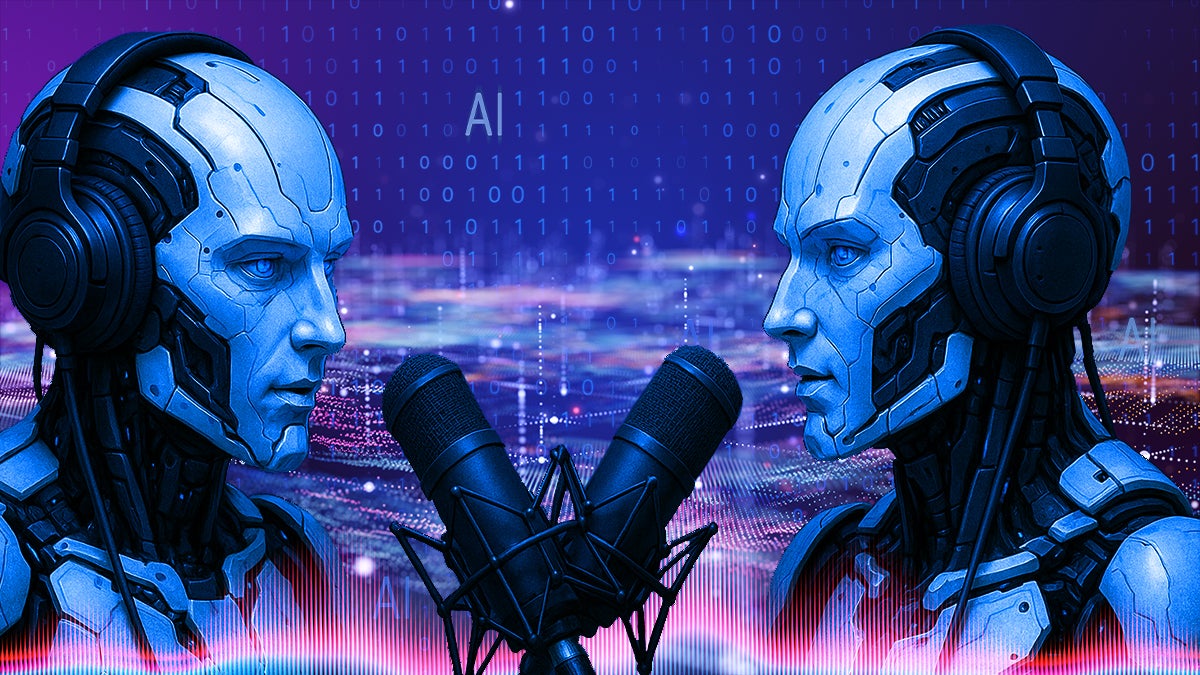全部新闻

CoreWeave 有史以来最糟糕的一周表明人工智能交易者变得挑剔
2025-11-17 14:38:12
资金继续流入人工智能基础设施公司,但投资者变得更加挑剔。高负债计算服务提供商 CoreWeave Inc. 的股价上周下跌了 26%。相比之下,美光科技受益于人工智能存储芯片的强劲需求,创下历史新高,上涨4.6%。这一转变反映出市场重新评估有利于财务稳健的公司,而不是债务负担沉重的投机性公司。
资金继续流入人工智能基础设施公司,但投资者变得更加挑剔。高负债计算服务提供商 CoreWeave Inc. 的股价上周下跌了 26%。相比之下,美光科技受益于人工智能存储芯片的强劲需求,创下历史新高,上涨4.6%。这一转变反映出市场重新评估有利于财务稳健的公司,而不是债务负担沉重的投机性公司。

人工智能将古老的彩票骗局变成了德克萨斯州的犯罪浪潮
2025-11-17 14:36:41
在人工智能和来电显示欺骗和社交媒体消息等现代技术的帮助下,彩票/抽奖骗局在德克萨斯州呈上升趋势。受害者被告知他们赢了钱,但必须支付费用才能领取奖金,但这些钱从未兑现。从 2020 年到 2025 年,德克萨斯人因这一骗局损失了近 3700 万美元,每个受害者平均损失 1,400 美元。VegasInsider 的研究强调,任何合法的彩票或抽奖活动都不需要为领取的奖品付款,并建议受害者不要相信一切,只在官方网站上核实奖品领取情况。
在人工智能和来电显示欺骗和社交媒体消息等现代技术的帮助下,彩票/抽奖骗局在德克萨斯州呈上升趋势。受害者被告知他们赢了钱,但必须支付费用才能领取奖金,但这些钱从未兑现。从 2020 年到 2025 年,德克萨斯人因这一骗局损失了近 3700 万美元,每个受害者平均损失 1,400 美元。VegasInsider 的研究强调,任何合法的彩票或抽奖活动都不需要为领取的奖品付款,并建议受害者不要相信一切,只在官方网站上核实奖品领取情况。

Tilly Norwood 创作者为历史频道推出人工智能主导的时间旅行系列
2025-11-17 14:35:57
Particle6 是一家人工智能制作公司,即将在荷兰历史频道首播《Streets of the Past》。这个由 10 部分组成的系列将利用人工智能将荷兰历史学家 Corjan Mol 送回过去,讲述与重要地点相关的历史故事。每集都将真实的历史人物与人工智能生成的角色以及根据档案材料制作的沉浸式场景融为一体,随后是摩尔对其当代影响的反思。这标志着 Particle6 在人类监督的指导下首次在屏幕上部署人工智能技术,旨在为历史剧制作树立新标准。
Particle6 是一家人工智能制作公司,即将在荷兰历史频道首播《Streets of the Past》。这个由 10 部分组成的系列将利用人工智能将荷兰历史学家 Corjan Mol 送回过去,讲述与重要地点相关的历史故事。每集都将真实的历史人物与人工智能生成的角色以及根据档案材料制作的沉浸式场景融为一体,随后是摩尔对其当代影响的反思。这标志着 Particle6 在人类监督的指导下首次在屏幕上部署人工智能技术,旨在为历史剧制作树立新标准。

人工智能播客机器每周制作 3,000 集——人们正在收听
2025-11-17 14:05:25
Inception Point AI 每周使用人工智能生成 3,000 多集播客节目,向 Spotify 和 Apple 等平台提供大量内容,其中包括本地化天气预报和安娜·温图尔 (Anna Wintour) 等人物的传记系列。该公司拥有 1200 万次剧集下载量和 40 万订阅者,展示了人工智能在无需人类作家或主持人的情况下扩大盈利、可访问播客的潜力。每集的制作成本为 1 美元,并且只需要 20 名听众即可实现盈利,因此该模型优先考虑数量而不是质量。该公司计划进一步扩展到视频内容,同时承认色调匹配和事实准确性方面的局限性,尽管它采用交叉引用人工智能模型作为保障。Inception Point 旨在引领各种格式的人工智能生成媒体的发展,有可能重塑内容的创建和消费方式。
Inception Point AI 每周使用人工智能生成 3,000 多集播客节目,向 Spotify 和 Apple 等平台提供大量内容,其中包括本地化天气预报和安娜·温图尔 (Anna Wintour) 等人物的传记系列。该公司拥有 1200 万次剧集下载量和 40 万订阅者,展示了人工智能在无需人类作家或主持人的情况下扩大盈利、可访问播客的潜力。每集的制作成本为 1 美元,并且只需要 20 名听众即可实现盈利,因此该模型优先考虑数量而不是质量。该公司计划进一步扩展到视频内容,同时承认色调匹配和事实准确性方面的局限性,尽管它采用交叉引用人工智能模型作为保障。Inception Point 旨在引领各种格式的人工智能生成媒体的发展,有可能重塑内容的创建和消费方式。

由英特尔前首席执行官帕特·基辛格 (Pat Gelsinger) 支持的温哥华初创公司表示,其小芯片将人工智能电力需求减少了一半以上
2025-11-17 14:03:00
温哥华初创公司 PowerLattice 开发了一款小芯片,旨在提高数据中心人工智能系统的效率,有可能将相同计算能力的电力消耗减半。该公司最近获得了 2500 万美元的融资,并得到了英特尔前首席执行官 Pat Gelsinger 和 Celesta Capital 的 Lip-Bu Tan 的支持。PowerLattice的技术可以满足人工智能日益增长的能源需求,并支持新的人工智能应用和系统设计,使波特兰地区更多地参与人工智能创新。
温哥华初创公司 PowerLattice 开发了一款小芯片,旨在提高数据中心人工智能系统的效率,有可能将相同计算能力的电力消耗减半。该公司最近获得了 2500 万美元的融资,并得到了英特尔前首席执行官 Pat Gelsinger 和 Celesta Capital 的 Lip-Bu Tan 的支持。PowerLattice的技术可以满足人工智能日益增长的能源需求,并支持新的人工智能应用和系统设计,使波特兰地区更多地参与人工智能创新。

Replicate 正在加入 Cloudflare
2025-11-17 14:00:45
用于运行 AI 模型的领先平台 Replicate 即将加入 Cloudflare。此次集成旨在通过利用 Replicate 的广泛模型目录以及 Cloudflare 的全球网络和无服务器推理平台,使部署和构建具有 AI 模型的全栈应用程序变得更加容易。这两个平台的现有用户将受益于改进的性能和可靠性,而不会造成中断。此次合作还将引入 Workers AI 的微调功能,使开发人员能够在集成平台上无缝运行自定义模型。
用于运行 AI 模型的领先平台 Replicate 即将加入 Cloudflare。此次集成旨在通过利用 Replicate 的广泛模型目录以及 Cloudflare 的全球网络和无服务器推理平台,使部署和构建具有 AI 模型的全栈应用程序变得更加容易。这两个平台的现有用户将受益于改进的性能和可靠性,而不会造成中断。此次合作还将引入 Workers AI 的微调功能,使开发人员能够在集成平台上无缝运行自定义模型。

客户挑战
2025-11-17 14:00:08
站点组件加载失败,可能是由于浏览器扩展、网络问题或浏览器设置造成的。检查互联网连接、禁用广告拦截器或使用其他浏览器。
站点组件加载失败,可能是由于浏览器扩展、网络问题或浏览器设置造成的。检查互联网连接、禁用广告拦截器或使用其他浏览器。

MCP 人工智能代理安全初创公司 Runlayer 与 8 家独角兽公司一起推出,由 Khosla 的 Keith Rabois 和 Felicis 提供 1100 万美元
2025-11-17 14:00:00
Runlayer 是一家专注于模型上下文协议 (MCP) 安全性的初创公司,凭借 1100 万美元的种子资金从秘密模式中崛起。该公司由安德鲁·伯曼 (Andrew Berman) 创立,在私下推出其产品后的四个月内,已与多家独角兽初创公司和上市公司签订了合同。Runlayer 旨在解决 MCP 中固有的安全漏洞,MCP 已被广泛采用,但缺乏针对即时注入攻击等威胁的内置保护。该初创公司通过提供一体化安全解决方案来脱颖而出,该解决方案将代理识别和访问控制网关与威胁检测、可观察性、企业开发功能以及与现有身份提供商兼容的详细权限相结合。
Runlayer 是一家专注于模型上下文协议 (MCP) 安全性的初创公司,凭借 1100 万美元的种子资金从秘密模式中崛起。该公司由安德鲁·伯曼 (Andrew Berman) 创立,在私下推出其产品后的四个月内,已与多家独角兽初创公司和上市公司签订了合同。Runlayer 旨在解决 MCP 中固有的安全漏洞,MCP 已被广泛采用,但缺乏针对即时注入攻击等威胁的内置保护。该初创公司通过提供一体化安全解决方案来脱颖而出,该解决方案将代理识别和访问控制网关与威胁检测、可观察性、企业开发功能以及与现有身份提供商兼容的详细权限相结合。

MCP AI 代理安全初创公司 Runlayer 推出了 8 家独角兽,由 Khosla 的 Keith Rabois 和 Felicis 提供 1100 万美元 |TechCrunch
2025-11-17 14:00:00
Runlayer 是一家专注于模型上下文协议 (MCP) 安全性的初创公司,凭借 1100 万美元的种子资金从秘密模式中崛起。该公司由安德鲁·伯曼 (Andrew Berman) 创立,在产品推出后四个月内已与多家独角兽和上市公司达成交易。Runlayer 旨在为 MCP 提供一体化安全解决方案,通过威胁检测、可观察性、企业开发和详细权限等功能解决现有实施中的漏洞。该初创公司利用其创始人在人工智能方面的经验以及之前在 MCP 方面的工作来使自己与竞争对手区分开来。
Runlayer 是一家专注于模型上下文协议 (MCP) 安全性的初创公司,凭借 1100 万美元的种子资金从秘密模式中崛起。该公司由安德鲁·伯曼 (Andrew Berman) 创立,在产品推出后四个月内已与多家独角兽和上市公司达成交易。Runlayer 旨在为 MCP 提供一体化安全解决方案,通过威胁检测、可观察性、企业开发和详细权限等功能解决现有实施中的漏洞。该初创公司利用其创始人在人工智能方面的经验以及之前在 MCP 方面的工作来使自己与竞争对手区分开来。

Nvidia Q3 预览:有什么能阻止 AI 王者?
2025-11-17 13:23:24
英伟达将于 11 月 19 日公布 2026 年第三季度财报,华尔街预计每股收益为 1.25 美元,营收为 548 亿美元,这意味着该公司估值超过 4 万亿美元,同比增长超过 50%。由于人工智能投资力度加大,该股今年已上涨约 40%。尽管出口限制影响了中国的销售,但在 411 亿美元的数据中心销售额的推动下,上季度收入同比增长 56% 至 467 亿美元。投资者将寻找数据中心领域持续广泛需求的迹象以及供应限制和地缘政治风险的最新情况。
英伟达将于 11 月 19 日公布 2026 年第三季度财报,华尔街预计每股收益为 1.25 美元,营收为 548 亿美元,这意味着该公司估值超过 4 万亿美元,同比增长超过 50%。由于人工智能投资力度加大,该股今年已上涨约 40%。尽管出口限制影响了中国的销售,但在 411 亿美元的数据中心销售额的推动下,上季度收入同比增长 56% 至 467 亿美元。投资者将寻找数据中心领域持续广泛需求的迹象以及供应限制和地缘政治风险的最新情况。